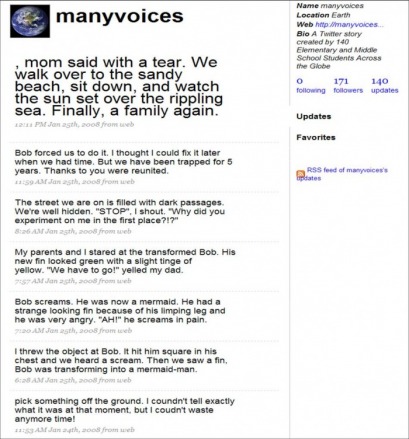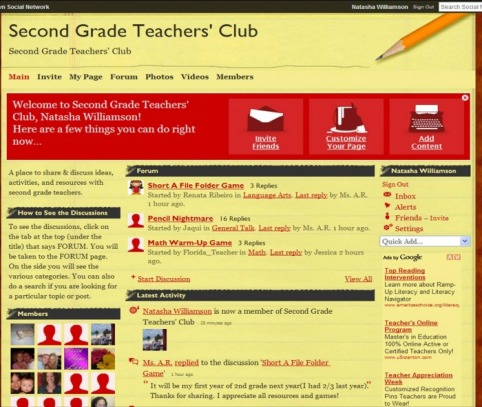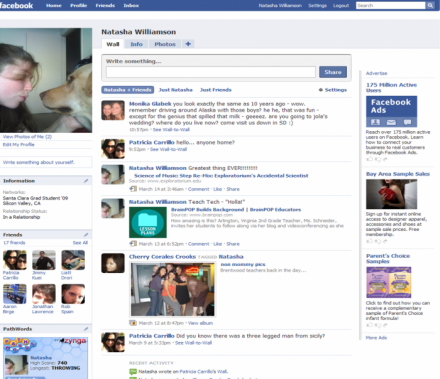Social Networking
Twitter:

Though I recently signed up for Twitter as part of my research for this site, I haven't yet used it and so felt compelled to use outside sourcing. I do imagine, though that there are a variety of ways in which such a communications device could be used - what an excellent topic to blog about!
Twitter is a social networking and micro-blogging service that enables its users to send and read other users' updates known as tweets. Tweets are text-based posts of up to 140 bytes in length. - Wikipedia
The following exerpts are from Education Week's Digital Directions Blog by Katie Ash (Published Online: June 25, 2008):
"George Mayo, an 8th grade English teacher at the 780-student Silver Spring International Middle School in Montgomery County, Md., recently used Twitter as a platform for a collaborative story written by his students.
“One of my goals was to try and collaborate online,” says Mayo. But after spending some time exploring the use of blogs for collaboration, Mayo instead turned to Twitter. “That was my avenue into online-collaboration projects,” he says. Mayo created a Twitter account called Many Voices and invited his students, and students around the world, to add a sentence or two to the ongoing story through tweets. Within six weeks, the rolling story, written 140 characters at a time, was finished—with the help of more than 100 students in six different countries.
“It was incredibly simple and really amazing,” says Mayo. “My students and I would come in, and suddenly kids in China had written a chapter for the book.” Mayo then used a self-publishing Web site to print the book, a suspenseful science-fiction story about a mermaid-turned-human, and make it available as a free download for his students."
Social Networking with your class

Create your own free social network for you and your staff or your students at www.ning.com.
To the left is an example of a social network I belong to, "Second Grade Teachers' Club". Search to find your own grade level!
Social Networking

Social Networking sites are very popular now. They are similar to blogs but, while blogs often consist of long, thought-out diatribes, social networking sites require users to post shorter entries, of just a few sentences, perhaps. What is truly cool about such sites as Friendster, MySpace, or Facebook (on left) is that they enable you to contact people who you have lost track of or whose names you'd forgotten, and reconnect. You can also possibly meet new people through friends. Although communication through social networking sites is limited, they do allow you the possibility of more job opportunities as well as social connections.
For use in the classroom such sites have great advantages. Students often feel more comfortable writing in blurbs and working from one another's ideas. Such tools may best be used from home, as homework reflection pieces, updates, and remediations.
Find me on Facebook :